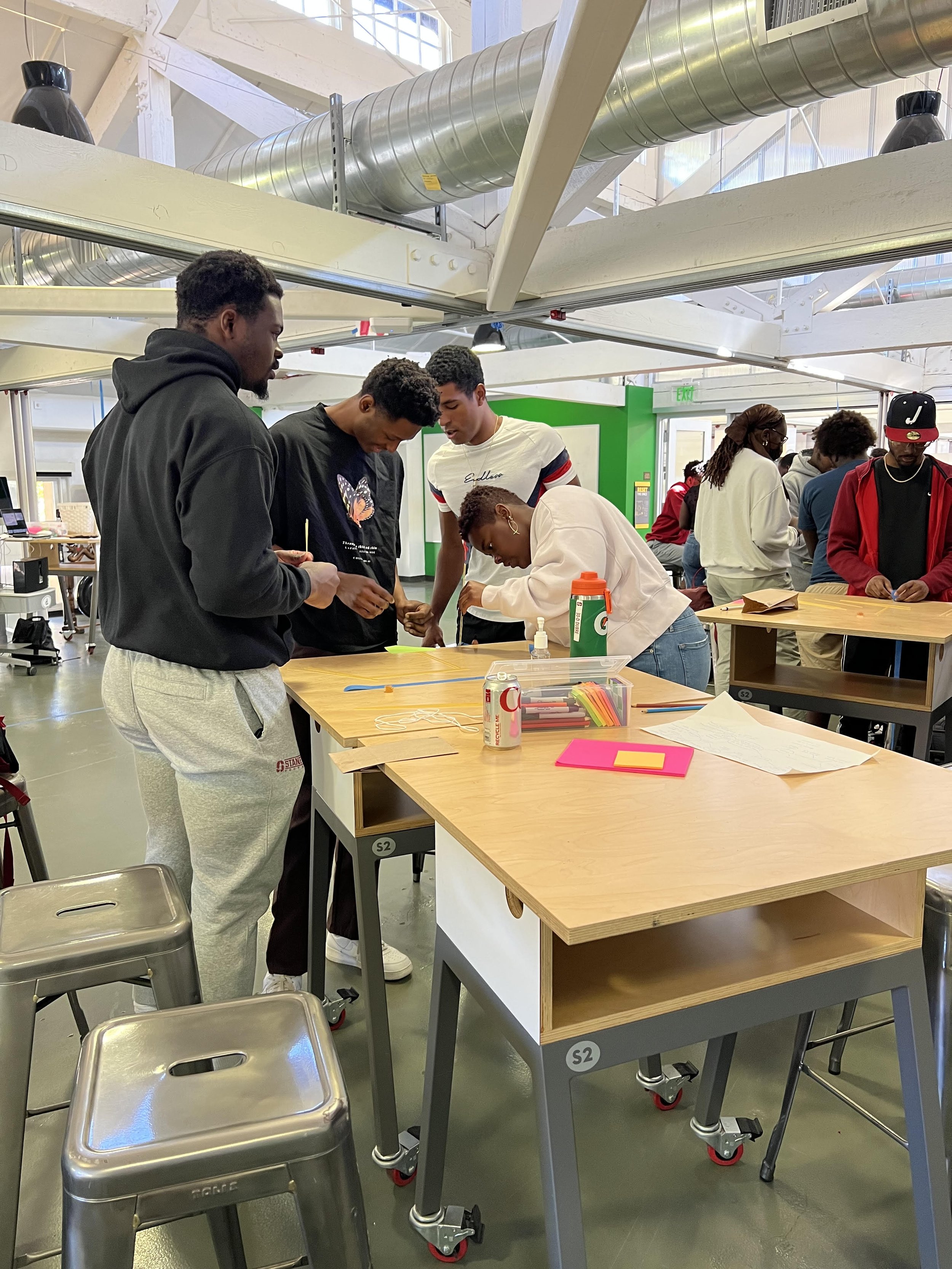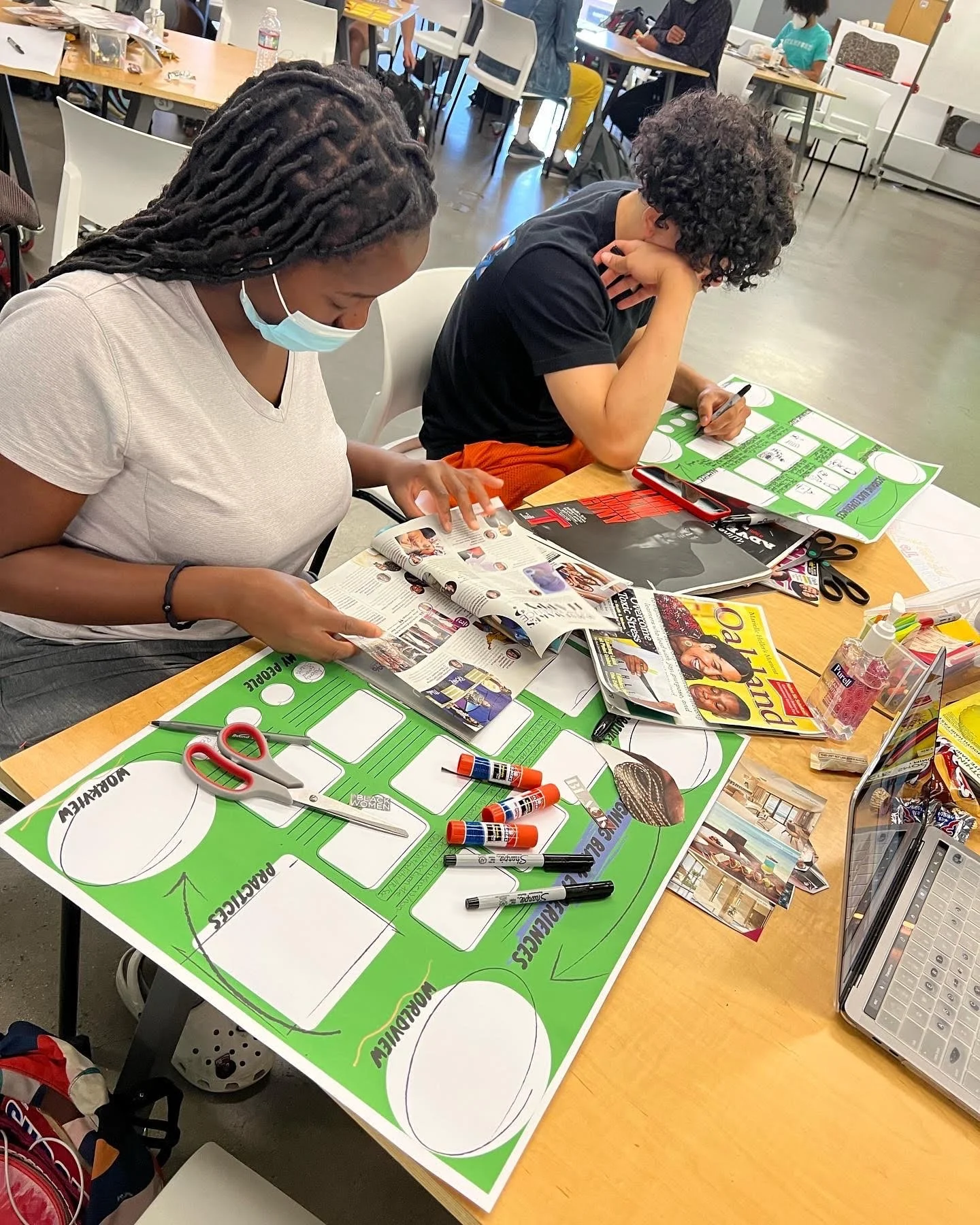Designing Black Experiences: Life Design for Affinity Spaces
As educators, we have the unique opportunity to create academic spaces where all students can feel seen, heard, and understood. This is a case study sharing our experience designing an affinity space for Black students on Stanford’s campus as they navigate their multi-dimensional life experiences.
Why Affinity Spaces:
Black students at Predominantly White Institutions (PWIs) commonly share an emotional experience of underrepresentation throughout their universities. Oftentimes, students at these institutions are “the only one”; the only Black student in their courses, the only Black student in their friend group, the only Black student in their study group, etc. This hyper-awareness of their outward identity, in a place of learning and growing, makes it far more difficult for students to bring their authentic selves into these spaces.
For many, college is the first true exploratory stage in life with an increased amount of freedom and decision-making. It's a stage where students begin finding their place in the world by wrestling with big questions like: “Who do I want to be? What do I want to do? What do I believe in?” When these questions arise, it is critical that students have the opportunity to approach them as their truest selves, not the version that feels the pressures of assimilation or imposter syndrome.
Affinity spaces are a powerful tool for students who share common identity characteristics, interests, or ideologies. These spaces provide a safe environment for students to explore and embrace their authentic selves; supporting them in learning academic content, developing personal and professional skills, and building community.
ME: 180 Designing Black Experiences
At Stanford University, where only 7% of undergraduate students are Black, the lack of representation and community can take a toll on students' mental health, well-being, and overall college experience. To address this issue Life Design Lecturer and Fellow, Shanice Webb, invited former Associate Direct of Career Catalysts Arame Mbodj and Student-Athlete Development Advisor TJ Burnett, to form a team of diverse Black lecturers to bring Designing Black Experiences to life, a course that serves as an affinity space for Black-identifying students and allies of the Black community.
Using design thinking, the course helps students interrogate societal narratives, reframe dysfunctional beliefs, prototype new ideas, and design their lives with intention. Students are encouraged to explore and design radically different possible futures that impact their individual Black experiences and the experiences of the Black community at large. From building Japanese racecars from scratch (despite the lack of representation of Black identities in the field) to designing ways to combat genital mutilation in Western African countries, Designing Black Experiences has become a place where students are dreaming and taking a bias to action to lay the foundational work for who they might become in the future.
Here is a link to the Fall 2022 Course Outline.
Impact of Designing Black Experiences
DBE was launched in the Spring of 2022 for both graduate and undergraduate students, with the goal of reaching as many Black students on campus as possible. The course is still in its early stages, but initial outcomes have been positive, with students reporting feeling a sense of belonging and comfort in expressing their emotions.
When students from the class were prompted with the following question: "What was your experience like being in an affinity space for Black students?" Students responded with the following:
"AMAZING. I think I saw that I am not alone at this school. I feel like I was able to share things I have been thinking or ideas that I had for the first time in a very open and honest space. I would say a lot of my friends at this school are not black, so this space was vital." - DBE FA '22 Student
"Amazing being able to connect and discuss ideas openly without second thinking the role of race in a space.” - DBE FA '22 Student
"I felt very comfortable being myself and expressing some vulnerable emotions. It was comfortable to be able to talk about my problems using the shared black cultural background we have” - DBE FA '22 Student
Designing Affinity Spaces at Your University
Designing Black Experiences is just one example of an affinity space in the college classroom. Every college student deserves an academic space where they feel seen, understood, and connected. If you are interested in cultivating a positive affinity space for students at your university, here are a few lessons learned that can be applied when creating a positive affinity space:
Represent diversity within the identity: DBE instructors are all Black and have diverse experiences and ways of identifying as Black (African American, African, and Biracial). This representation highlights that although they share a similar identity, their experiences are not a monolith.
Foster vulnerability and trust: Establish norms for student engagement and remember to capture the norms and call back to them frequently throughout the course. Encourage students to co-create the affinity space along with you by holding space for students to name what they need to feel safe and heard.
Consider representation: When sharing research and resources to support learnings, ground students with content that is relevant and represents the identities within the affinity space. This increases deeper understanding and encourages empathy for oneself and others.
Design a physical environment that invites playfulness and connection: Offer your course in spaces on campus with moveable tables and comfortable chairs. Fill the space with items that inspire curiosity and creativity (post-its, colorful writing utensils, and extra-large sheets of paper). Even virtual environmental cues like bringing a speaker and co-creating a playlist with students to play during class can make an impact on the physical environment.
Empower students to take action: Encourage students to take a bias to action on the issues they are passionate about and provide opportunities for them to prototype their ideas. This supports building a sense of purpose and impact.
Affinity spaces have the opportunity to drive positive change in the college experience of students who struggle to find their place. If you are considering designing an affinity space to inspire a sense of belonging and amplify the voices of marginalized identities at your institution, we would love to support you in doing so.
Contact Shanice Webb at swebb2@stanford.edu or TJ Burnett at tj.burnett@stanford.edu for more information.




